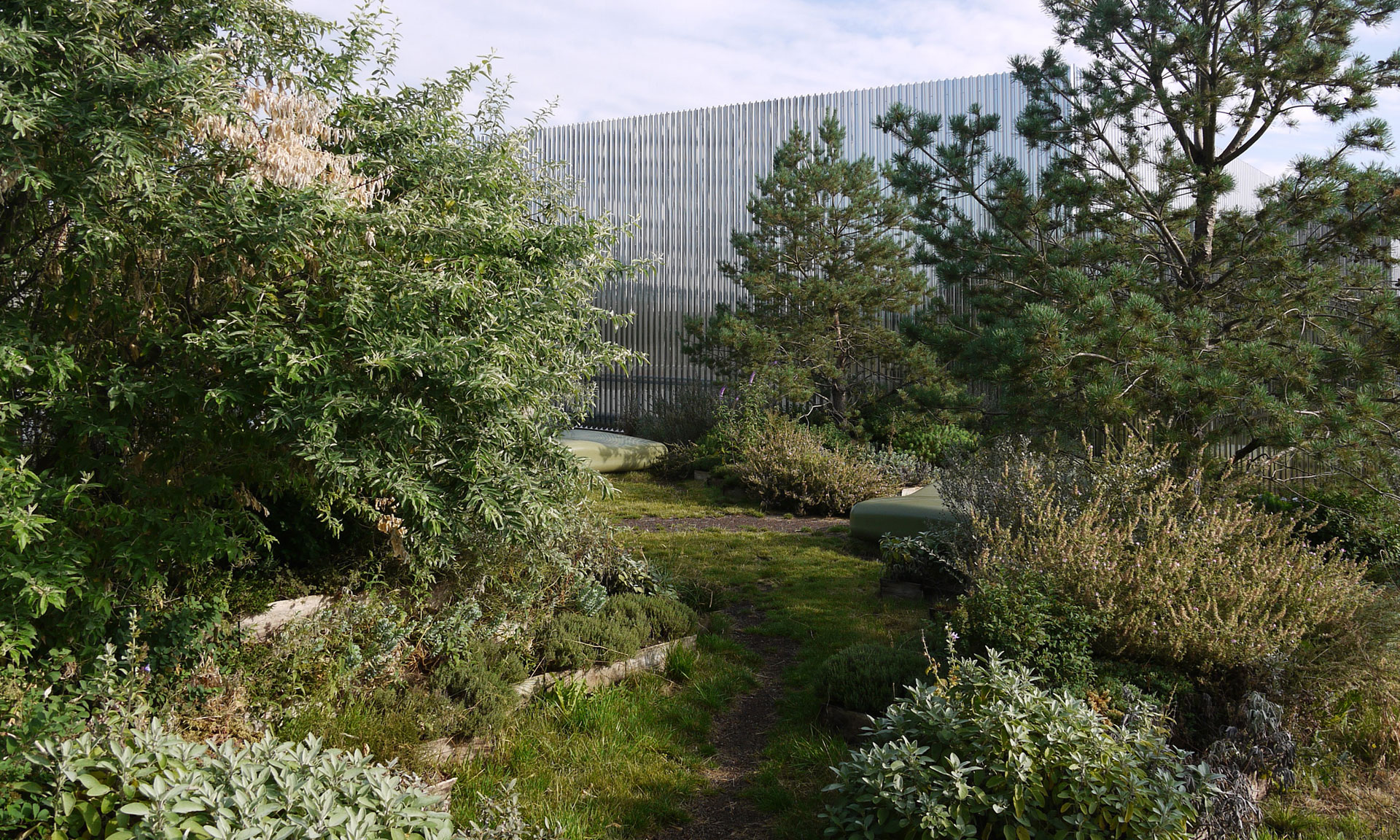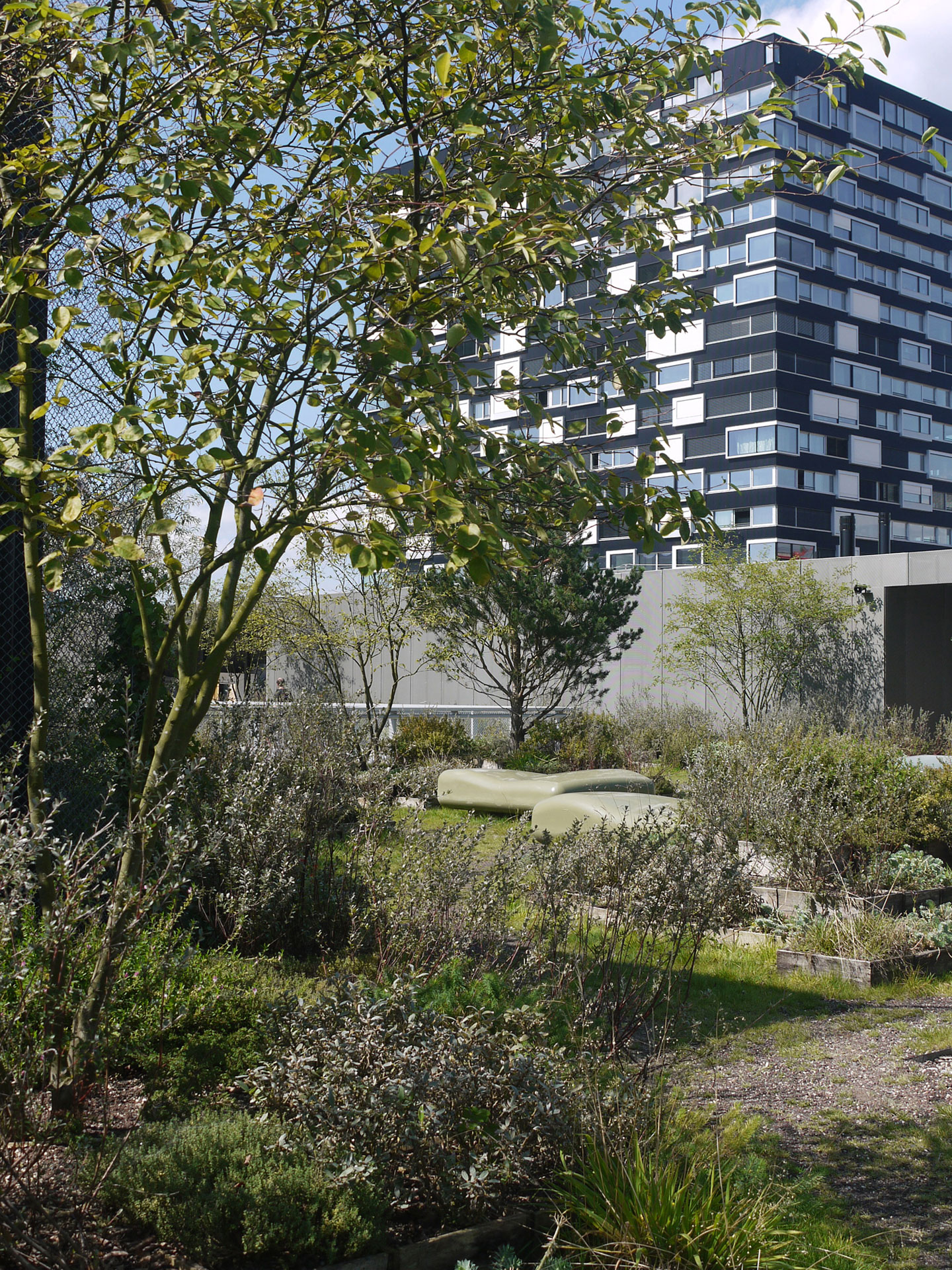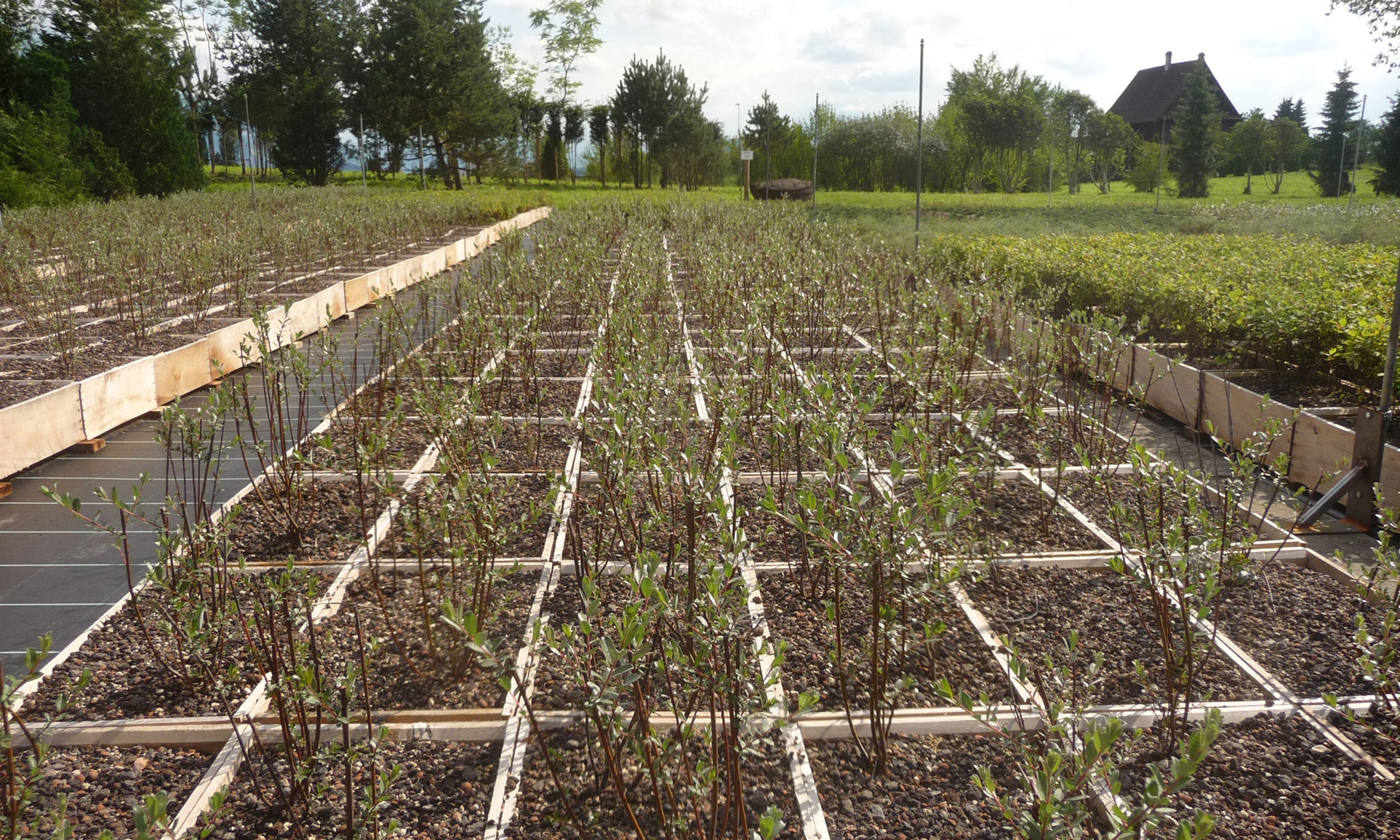Density, urbanity and exciting intensity – 30 metres above ground in Zurich West. On the roof garden of the new University of the Arts on the site of the former Toni factory, the outdoor space creates a green oasis for students in an area where there has been a surge of new high-rises, technical buildings, chimneys, atriums and concert halls.
Here, plants grow in wooden crates stacked to create a pixel-like rugged landscape. It is a paradoxical garden: built in no time and ready for use on the final day of construction. Unlike most parks, it hasn’t gone through a long development phase. Yet the lush garden is far from finished – its primary principle is not growth, but decay.
A 2,600 m2 urban world with the appearance and radical individuality of a small private garden. The stacked boxes were precultivated over two years with a colourful mix of plants suitable for the environment, including perennials, herbs and small shrubs such as willow. Eventually, the boxes will decay, the plant species will mix and the pixelated landscape will grow into soft mounds, forming the roof’s base soil layer that will enable plant growth. This specific system and strong identity is the result of a careful study of the location and the envisaged intense level of use from the beginning, combined with the availability of water on the roof, short construction period and architectural limits on structural height.
As a symbiosis of natural and artificial, the rugged world of stacked wooden crates reflects the place and the environment. Here, the much-cited process-oriented nature of Landscape Architecture has been reversed: the process begins at the apparent end – with decay.





The design solution precisely uses these limitations to create a specific language. All vegetation, including perennials, herbs and small shrubs were pre-cultivated in wooden crates at a local nursery. On opening day, the garden began its natural, poetic and very beautiful process of decay. Eventually, the wooden crates fall apart as the plant species and trees develop. The garden will transform into soft mounds, forming the roof’s base soil layer that will enable plant growth.
![]()






